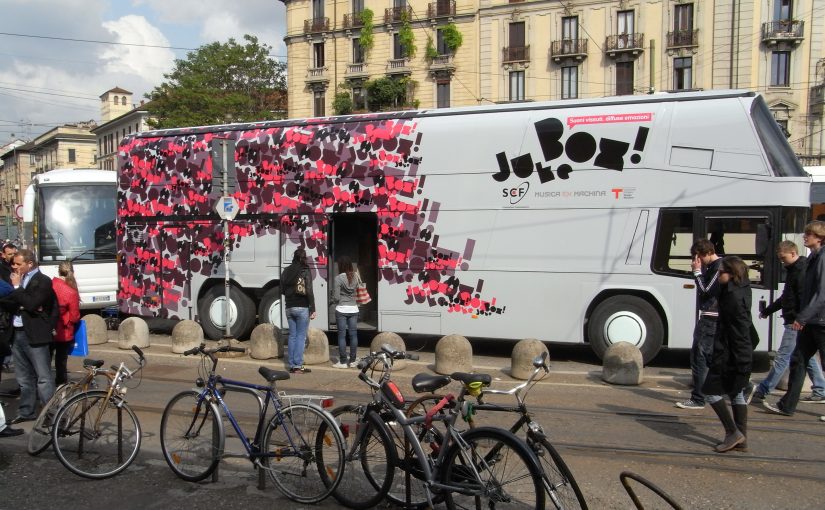April 2009
This is a book chapter exploring the enduring cultural significance of the jukebox in a digital age. It documents a research project to create a new form of jukebox, sponsored by SCF Consorzio Fonografici and exhibited in the Triennale Museum, Milan. 22nd-27th April, 2009. The digital jukebox concept I developed used customised beermat ‘tokens’ to activate the different tracks. Two working models were installed — one in the Triennale exhibition hall and a second that travelled around Milan in a bus. The published text was in Italian, so here is the translation:

Do Jukeboxes Dream of Analogue Sheep?
Given you may have a device in your pocket that can recall thousands of hours of music with little fuss and no expense, it might seem strange that the jukebox is the thriving cultural phenomenon it is. Apparently much more than a mere nostalgia trip, this seems to be about the richness of the shared experience that arises from their use, and the enduring need to impart/inflict/broadcast your taste. In a culture where you are encouraged to share every moment of your life with a wider audience, you may not have any hits on your MySpace page, but put 20p into the pub jukebox, and everyone in earshot is invited (forced) to acknowledge something of your preferences and taste in music.
The jukeboxes I knew when growing up were a perpetual source of intrigue, surprise and frustration. How much is each selection? Will I get any change? How many selections do I have left? Has it registered the last selection? How many selections are left to play before mine? Do the selections play in the order they were made, or in alphanumerical order? Does the machine harbour preferences for certain selections? Is the playlist entirely random and pre-programmed by the bar manager? Despite this appalling level of service, my friends and I would happily pile money into the thing in the vain hope of hearing our selections and achieving our 3 minutes of fame, or ridicule.
Could the jukebox be the worst example of interaction design ever known? With the exception of some cars, most online booking and all telephone help services, it just may well be. In recent years, as the discipline has grown, there have been several attempts to create a concise definition of what good interaction design is. Most of these include the need for clear models of feedback, mapping of functions, reversal of operations as well as more abstract properties, such as being ‘smart,’ ‘pleasurable,’ and ‘trustworthy.’ The jukebox manages to score zero or negative points on every one of these criteria and yet it also manages to survive and thrive in a variety of forms. The iconic image of the device is, of course derived from its earliest electromechanical incarnations where records were stacked in an array and the user could watch them being selected and played through a window. More recently, first with the introduction of CD devices able to play thousands of songs, and then hard-disk devices able to play tens of thousands of songs, an appropriate form has yet to evolve. Amazingly, the payment and selection process appears to have evolved not at all. The next evolution will, no doubt, be some sort of networked device connected to the internet (the so-called ‘Celestial Jukebox’), able to play anything ever recorded in any form.
But how to decide what to play in such a situation? Ever walked into a music mega-store without something in mind to buy? A networked jukebox with a conservative 2M songs would be a comparable, but far worse, experience. After you got over the novelty of having every song you could possibly think of at your fingertips, you might start to get a little nervous about your ability to choose something appropriate to the occasion. Even in the unlikely event of being absolutely sure of what you wanted to listen to, you would then have to go about finding it. Inevitably, this would mean a keyboard input, and yes – a screen. Just when you thought you had escaped from the office, you find yourself back at work typing text into a computer. But what if you don’t already have your mind made up? Fortunately the same people that told us what goes to make up an engaging interaction can also tell the length of time it takes for a user to make a decisions from different configurations of menu. Unsurprisingly, big things and limited choices are favourable under this analysis. And that’s where the traditional jukebox scores so well. Big buttons, big discs spinning round, and only 80 to choose from. The jukebox in London that is regularly cited as amongst the very best in the city sits in a pub called Bradley’s Spanish Bar, off Tottenham Court Road. Is this an MP3 behemoth, or even a 200 Compact Disc model? No – it’s a German-made NSM Prestige from the 1980’s that holds just 80 records. While it doesn’t fit the ‘classic’ archetypical image of the Jukebox, it is evidently very popular and earns its keep. In fact, the affection and loyalty it inspires is unsurpassed. In the course of our research, we interviewed regulars who told us: “This pub has atmosphere like no other, and this is probably based around the jukebox,” “I have the same song at home but it sounds better here. It’s strange, it’s like going back in time, in your own private club.” This appeal is not lost on the owners and managers venues like this, who often go to great lengths to make sure that the jukebox is properly integrated into their customers’ experience.
In reconciling the vast opportunities offered by technology and the correspondingly vast problems associated with it, is the popularity of the old-fashioned jukebox a pioneering example of post-optimal design? Although this is a recent-term, it seems to go some way in explaining the jukebox’s enduring popularity – the post-optimal object being one that is happy to sacrifice conventional notions of ‘performance’ or ‘optimisation’ in favour of an experience that is somehow more meaningful or poetic. The dominant approach amongst companies making jukeboxes today is to get as much up to date technology in as possible, and to put it in a housing that resembles something from the 1950s. This demonstrates the difficulty with attempting to ‘reverse-engineer’ a poetic, or post-optimal interface. Of course it would be dumb to suggest that makers simply ignore all technological developments since the 1972 and continue to make clumsy temperamental electro-mechanical designs for a contemporary audience, but there is more to the appeal of these machines than the clichéd image of the arched neon and chrome housing. This type of machine allows for a big selection of music, but evidence shows that they make for a far less satisfying interaction with the user.
Designers working with novel, tangible user interfaces have come up with various proposals for enhancing this activity when the menu system is too large to enable a satisfying choice experience to take place. Dan Flashman’s “Mp3 Pulse” for example, enables the user to bypass any time-consuming and potentially embarrassing manual choices by making selections based on their heart-rate. Each user places their hands in the surface of the machine and their pulse taken through transducers placed at the index fingers. This device is intended to tailor the mood of a song to the mood of an environment, but is ultimately just a way of removing options where the time taken to make a particular choice massively outweighs the significance of that choice. Another design that attempts to deal with the issue of browsing and navigation in a more intuitive way is by Magnus Pettersen. His analogue interface allows the user to scroll and select through a complex system of menus without a keyboard by manipulating the display itself. This idea allows for a more physical interaction with the device that could in turn lead to a more playful and meaningful experience.
Regardless of changes in technology, it seems that the desire to share musical preferences in this way is as strong as ever, but designers of such systems must understand that ‘usability’ in the conventional sense is not necessarily applicable. This form of entertainment is very different to the “Audio Architecture” peddled by the Musak company, or the deliberately inoffensive background music favoured by many bar managers. It is foreground music, chosen for the people, by the people. The success of a jukebox is not in proportion to the number of songs it contains, and it’s not about accessing ‘heritage’ tracks from ‘heritage’ machines either. There is undeniably an element of nostalgia inherent in the whole concept of a jukebox, but there is also nothing standing in the way of someone designing a novel, meaningful and up-to-date device. My advice for any designers attempting such a task would be: keep the number of tracks to a minimum, make the interface deliberately confusing, give as little feedback as possible, and don’t worry too much about reliability. In other words, forget everything you have ever learned about ‘good’ interaction design. Just make it nice and loud, and avoid any horizontal surfaces that might be used as a shelf for precariously placed beer glasses.
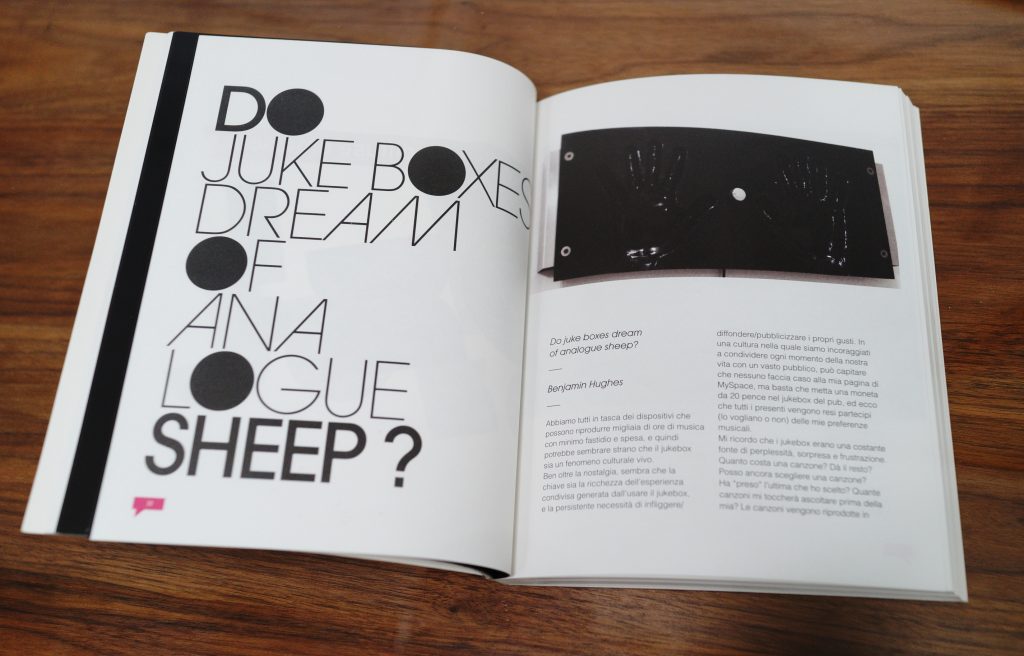
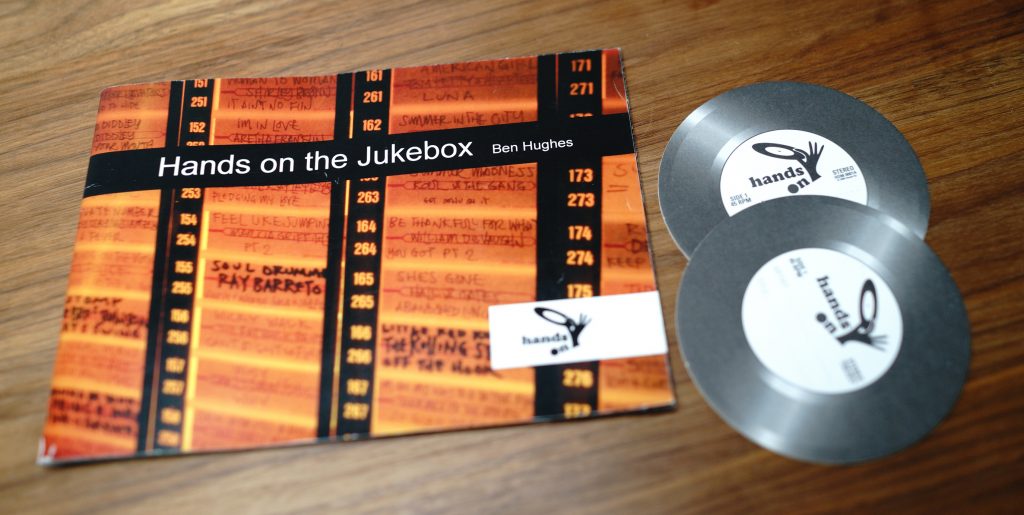
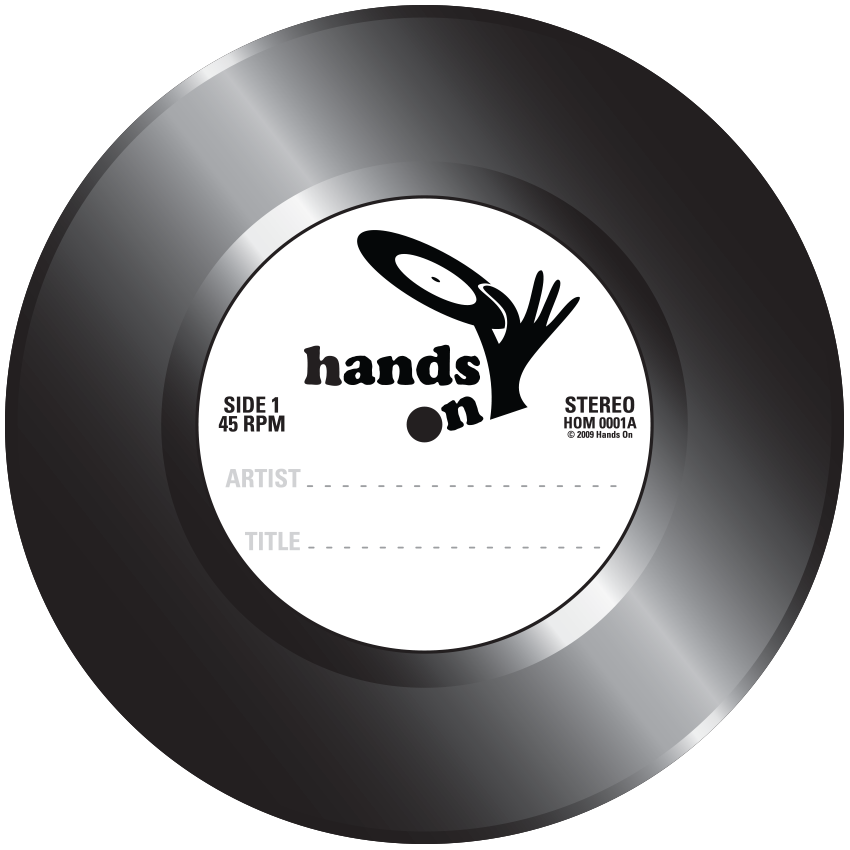
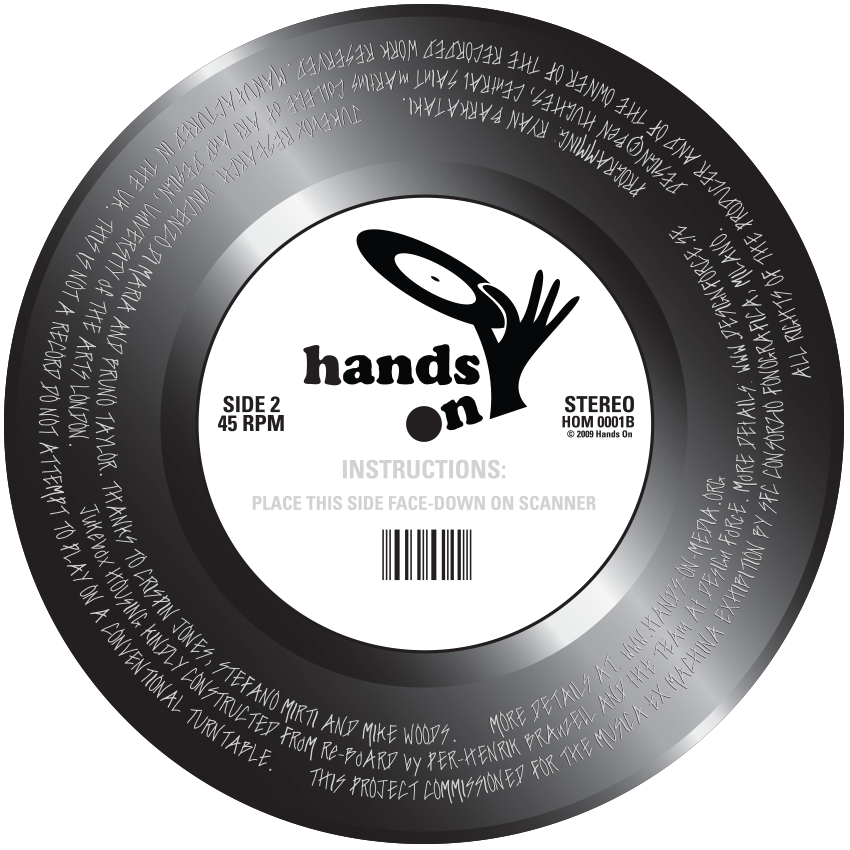
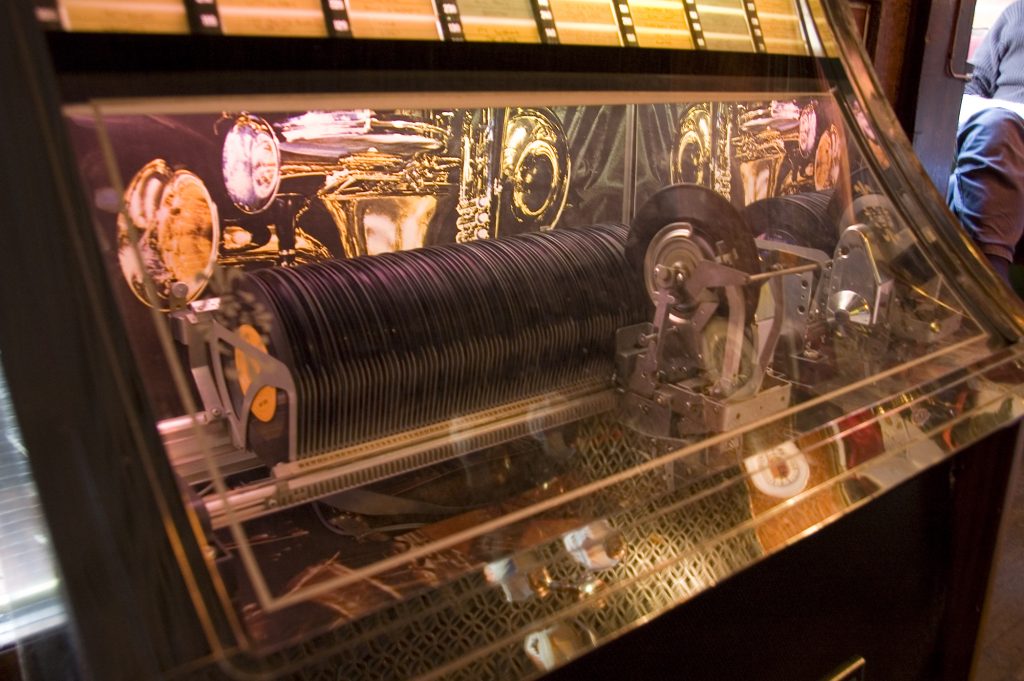
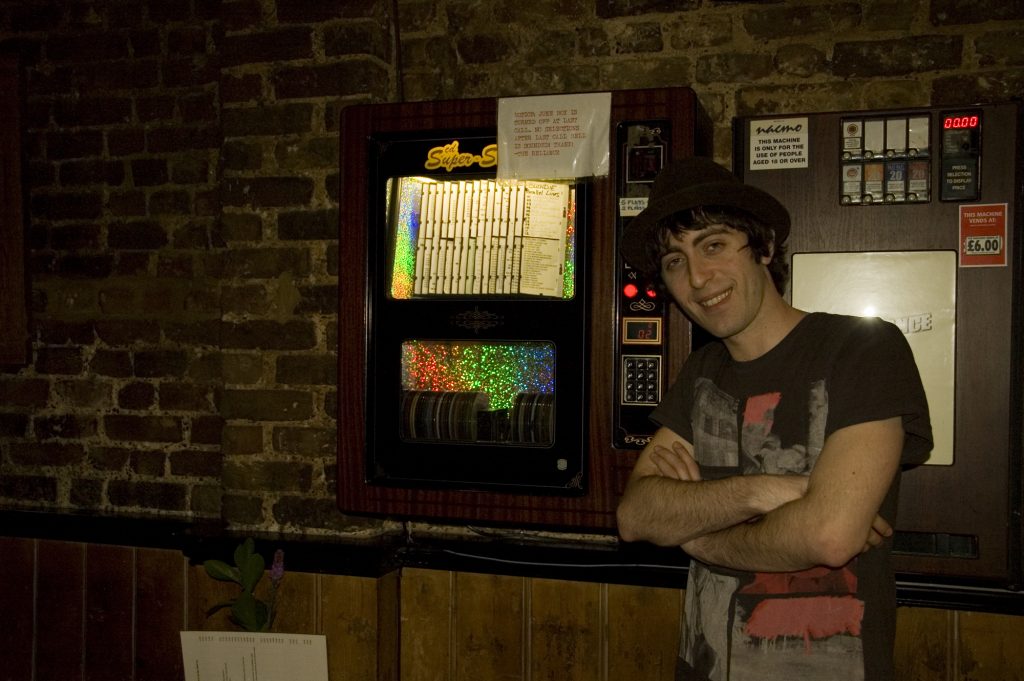
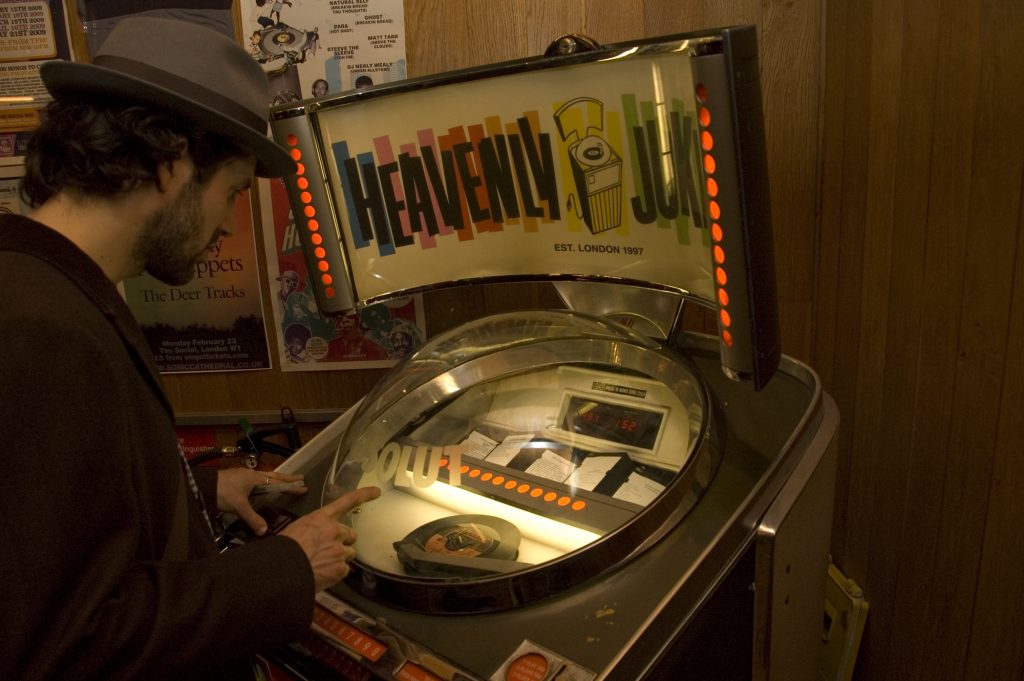
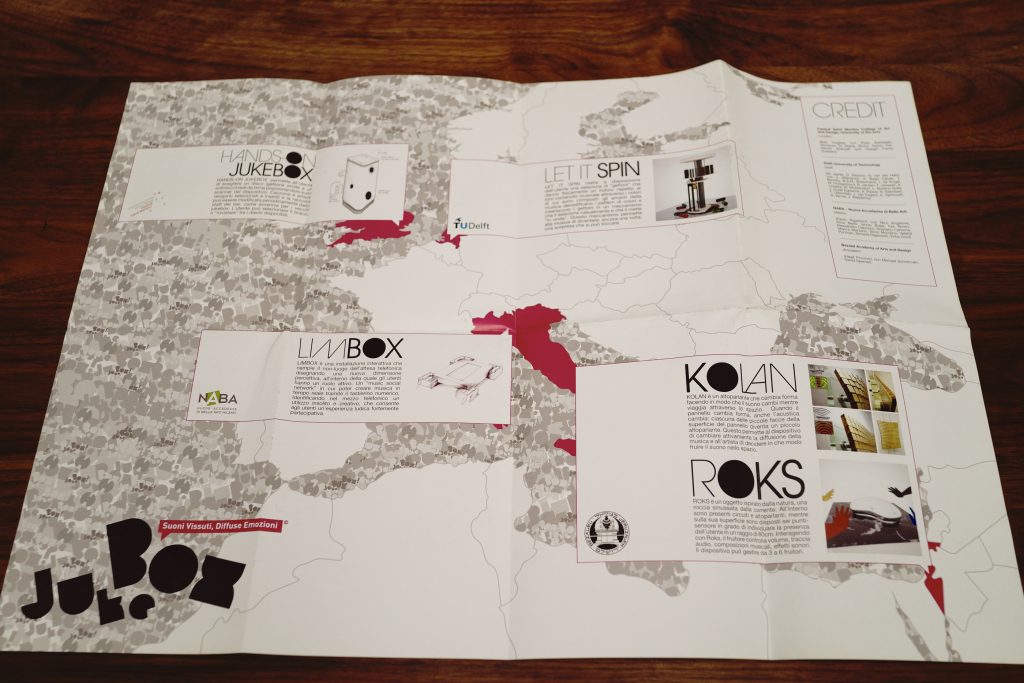
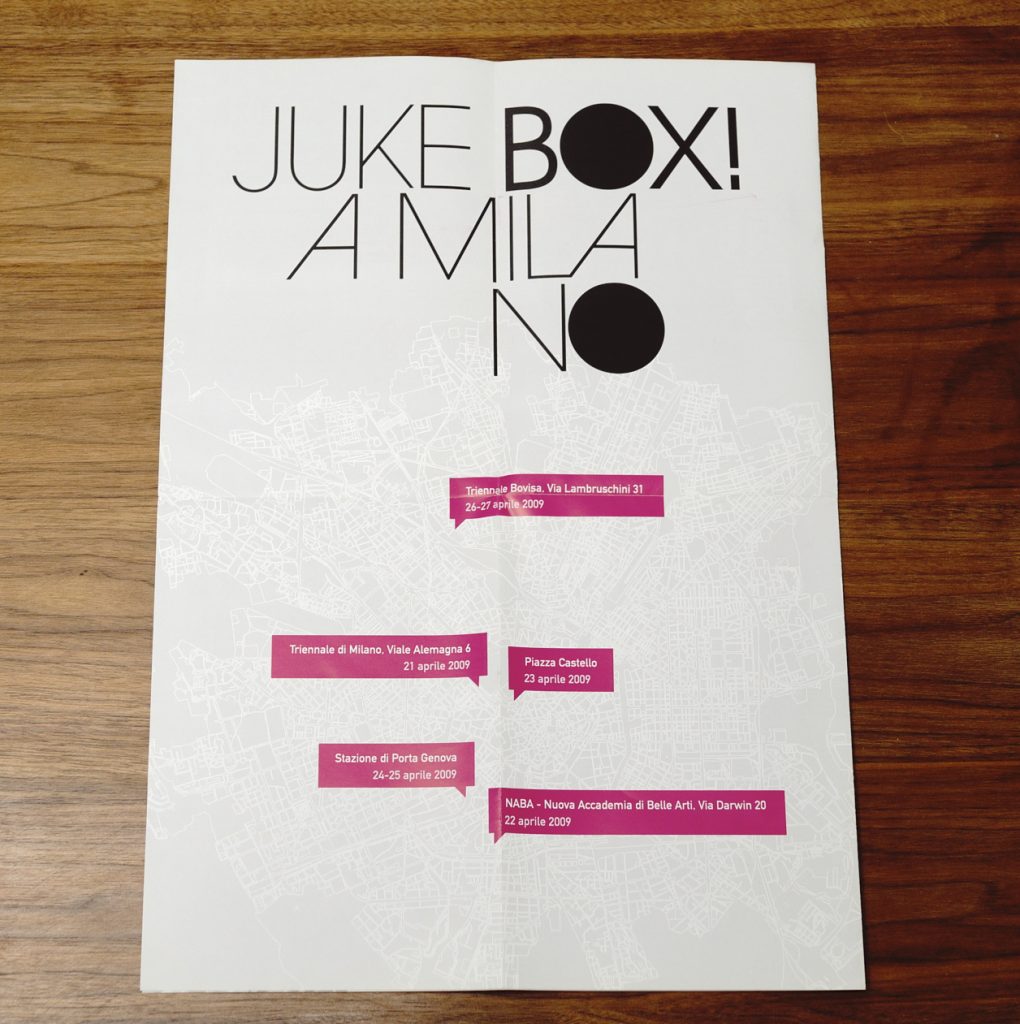
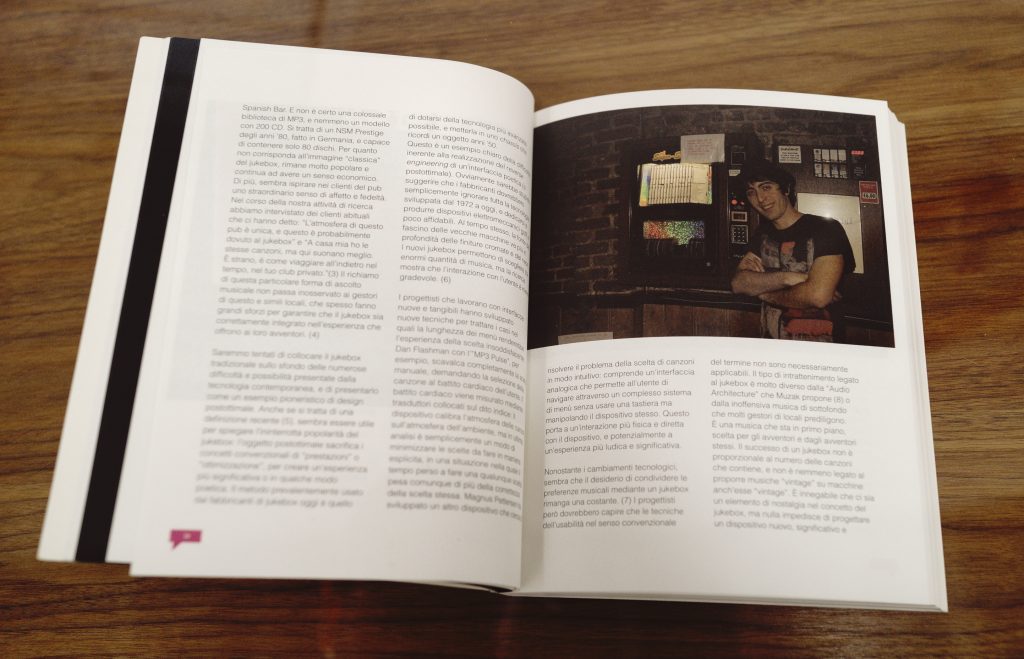
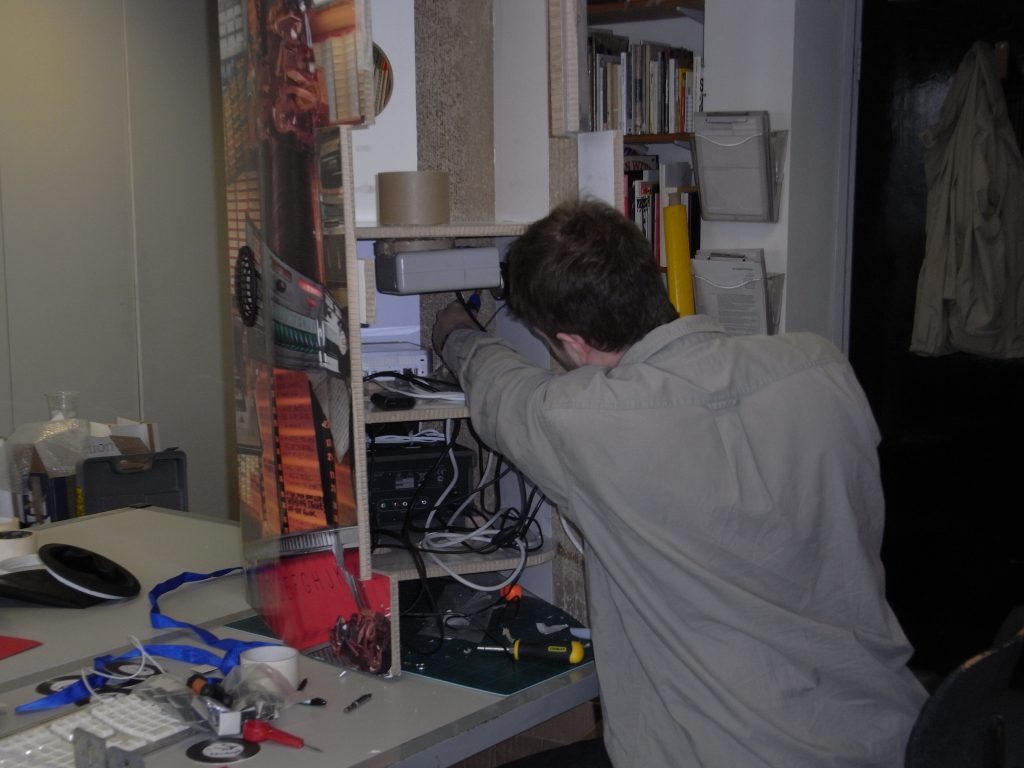
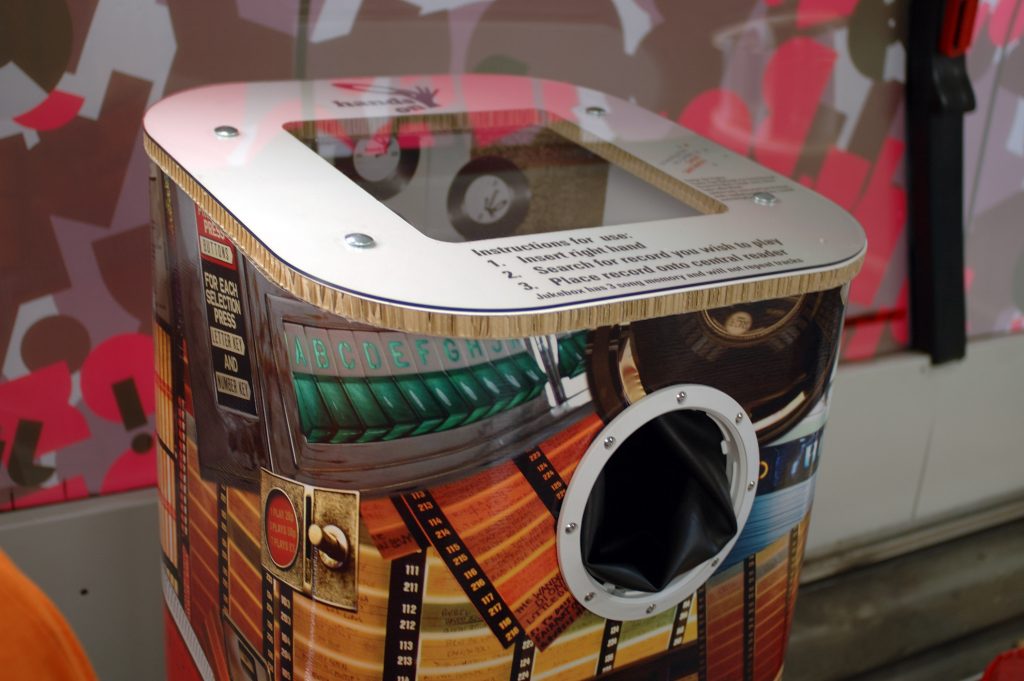
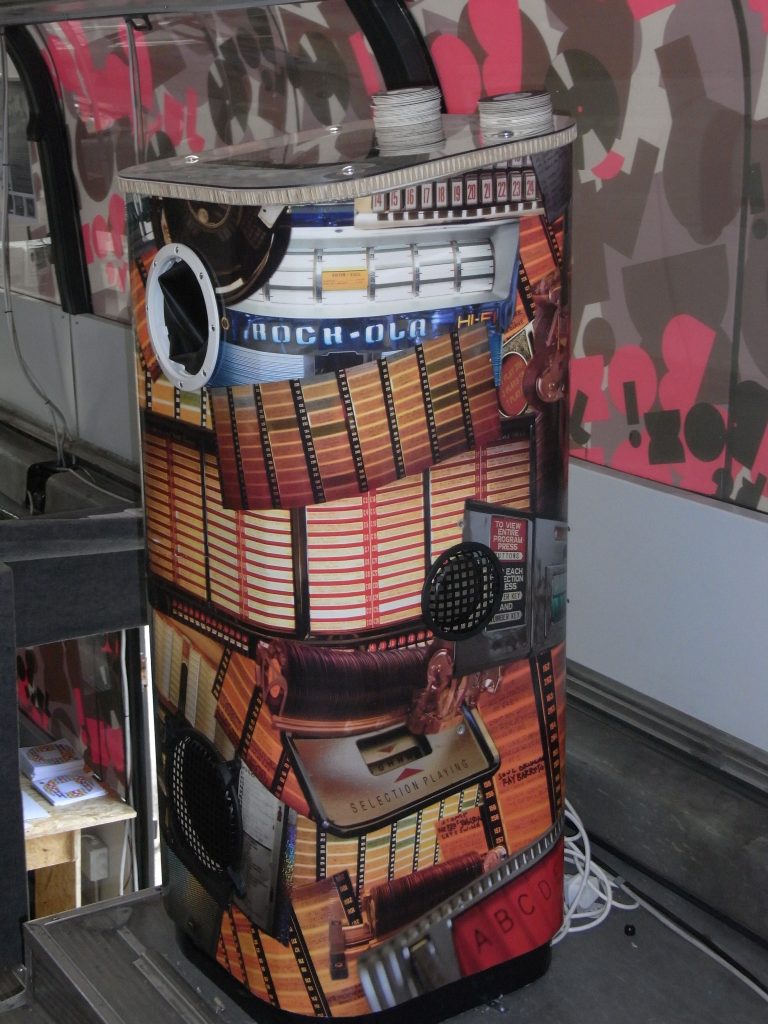
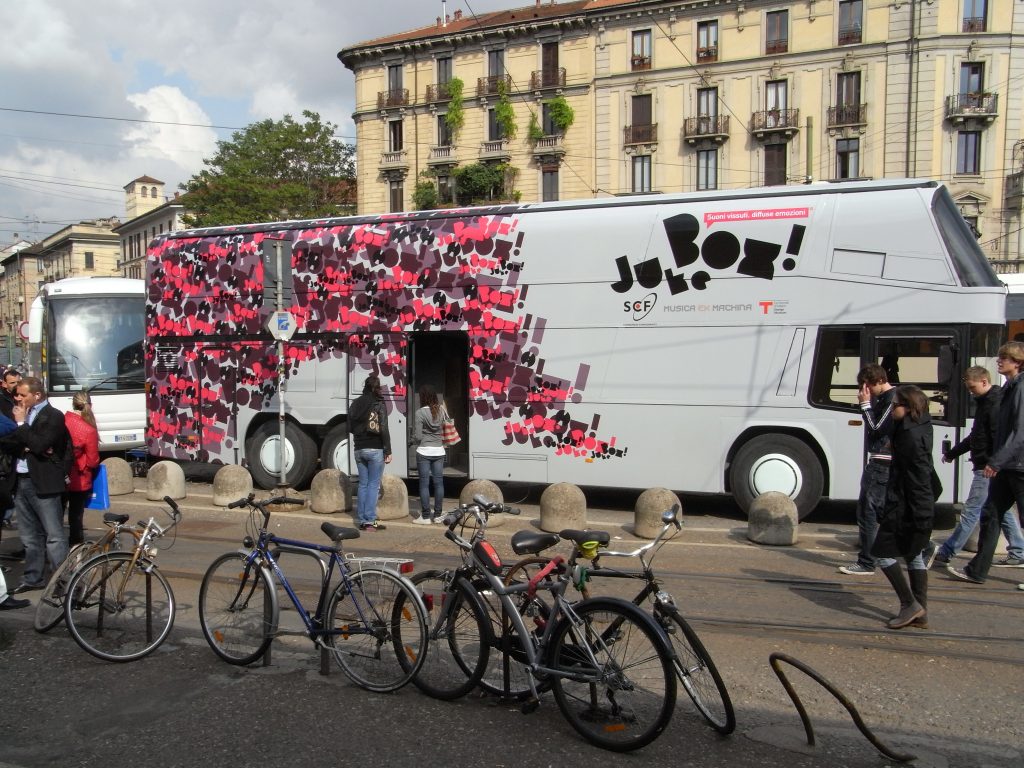
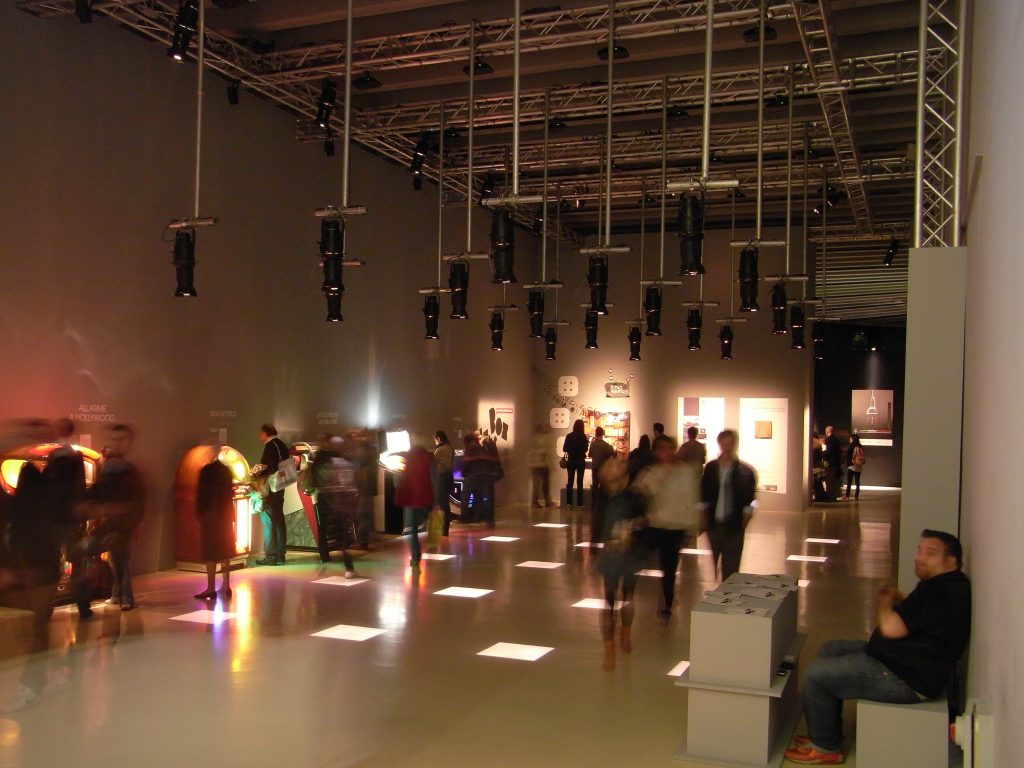
The publication, Jukebox, Suoni Vissuti, Diffuse Emozioni, was published by Postmedia Books, to accompany the exhibition at La Triennale di Milano, P.32–39
ISBN 88–7490-042–2
In addition to this text, I produced a booklet with Vincenzo Maria and Bruno Taylor documenting some of the research and outcomes of the project. Download here.
Research team: Vincenzo Di Maria, Bruno Taylor
Housing Construction: Per-Henrik Branzell and team at Design Force, Sweden
Programming: Ryan Barkataki
Thanks to: Stefano Mirti, Crispin Jones, Mike Woods and Alice Gallarate
SCF – Consorzio Fonografici celebra il Juke-Box esponendo modelli ‘del passato e del futuro.’
jukebox01.jpg Jukebox at Bradley’s Spanish Bar, 42–44 Hanway St., London. (image – Vincenzo DiMaria)
jukebox02.jpg Misha, barman with the CD Jukebox at the Reliance, 336 Old St., London. (image – Vincenzo DiMaria)
jukebox03.jpg CD Jukebox at The Social, 5 Little Portland St. London. (image – Vincenzo DiMaria)
jukebox04.jpg “Pulse MP3” Selector, by Dan Flashman. (image – Dan Flashman)
jukebox05.jpg Analogue interface by Magnus Pettersen. (image – Magnus Pettersen)
